How to Fix Update Error Code 0x800f0806 on Windows 11?
If you are experiencing the 0x800f0806 error when you try to download and install Windows 11 22H2, you are not the only one. The Microsoft support forums are filled with users experiencing errors when attempting to install the update KB5017321 or update KB501738. This error code is not visible when the update fails but can be spotted inside the Windows Update History page of the Settings app.

According to many affected users, this type of problem originates in various different culprits. Here’s a short list of scenarios that you should be aware of:
- Common WU Inconsistency – Most of the time, running the Windows Update Troubleshooter and implementing the suggested repair will be enough to resolve this issue. This approach will work when a service dependence is the cause of the cumulative update failing because it is in limbo. You can also go around this issue by installing the pending Updates via the Windows 11 Upgrade assistant or the Media Creation tool.
- Windows Update is stuck in a limbo state – This problem can occasionally be brought on by the Windows Update service becoming stuck in limbo. In this situation, you can fix the issue by manually resetting each Windows Update component from an elevated CMD or using a dedicated agent.
- System File Corruption – A typical system file inconsistency that affects the updating feature or the Windows Update troubleshooter is one of the most frequent reasons for this problem. You may probably resolve the problem by running SFC and DISM scans if the OS data is corrupted. You might need a repair install or repair install in more dire situations.
- Disabled Service Requirements – Disabling some Windows Update service dependencies is another possible reason why you can encounter this issue. Usually, a system resource optimization utility causes this to happen. In this situation, you can manually alter the behavior of the affected service dependencies to remedy this behavior.
- .NET Framework 3.5 is disabled – It turns out that a situation where a crucial WU installation dependency (.NET Framework 3.5) is disabled at a system level is another reason why you would anticipate experiencing this issue. You must activate it from the Programs and Features menu to enable it.
Now that we have gone over every potential reason why you might be experiencing this type of issue let’s go over a series of verified fixes that other users experiencing the 0x800f0806 error have successfully used to get to the bottom of this problem.
1. Run the Windows Update Troubleshooter
In most cases, you should be able to fix this problem by simply using the Windows Update Troubleshooter and following its instructions. This method will be helpful when a service reliance causes the cumulative update to fail by being stuck in an ambiguous state.
Running the software and applying the suggested hotfix should address the problem if the Windows Update Troubleshooter has identified a Microsoft repair plan that addresses the error’s primary cause.
The Windows Update Troubleshooter should be able to automatically recognize and resolve typical problems for you, even if you’ve never used it before.
Note: Since you are already running Windows 11, you are lucky because subsequent program versions are far more thorough than earlier ones. If a recognizable cause is found, Microsoft has offered several new automatic repair methods that may be started in a matter of seconds. The program now includes these new mending techniques.
Please make sure you adhere to the instructions given below if you haven’t previously to successfully run the Windows Update Troubleshooter and have the proposed fix implemented instantly:
- Press the Windows key + the R key simultaneously to bring up the Run dialog box. Attempt to address the Windows Update component next.
- Type “control” into the text box that just appeared, then click the Enter key on your computer to bring up the Control Panel’s user interface.

Access the Control Panel Important: Be careful to choose the proper choice when the User Account Control (UAC) asks you to allow administrative access by selecting “Yes.” You need admin access to run the Windows Update Troubleshooter properly.
- Look for the “troubleshoot” option using the Control Panel window’s search bar.
- Select all of the subcategories that come under the Troubleshooting header from the results list.
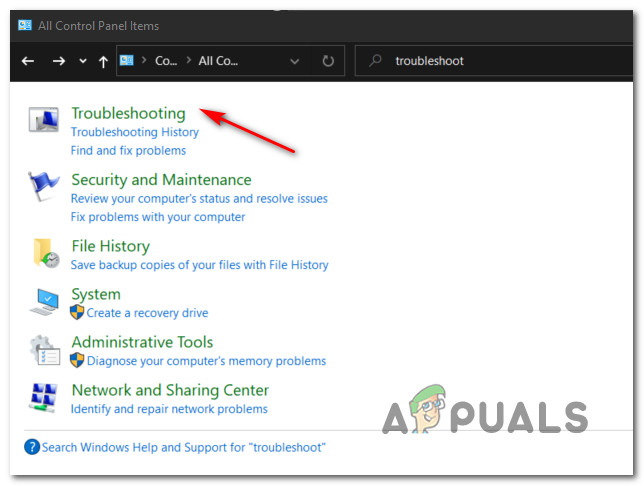
Access the Troubleshooter - On the Troubleshooting screen, under System and Security, choose to Fix difficulties with Windows Updates from the list of choices.
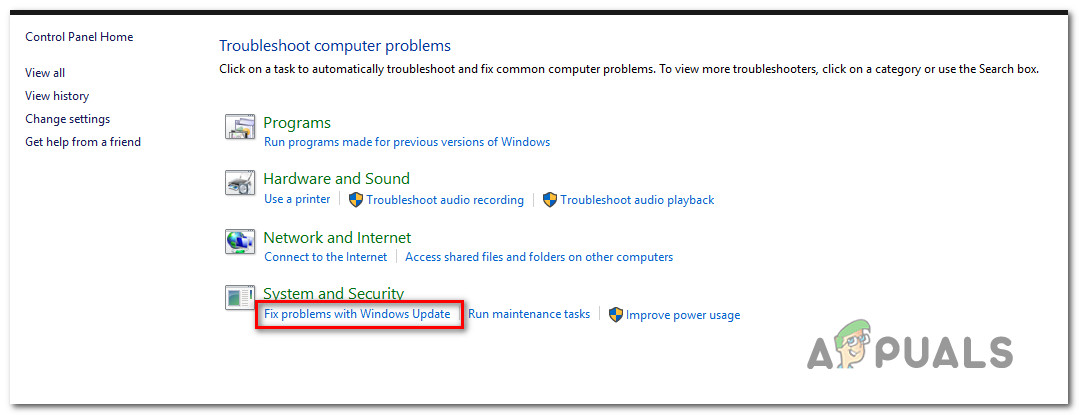
Access the Troubleshooting menu - Select Next from the selection when requested by the Windows Update Troubleshooter, then hold off on making any further decisions until the first scan is finished.
- After finding a workable solution, choose it by clicking the Apply this Fix button, then use it to address the current issue.
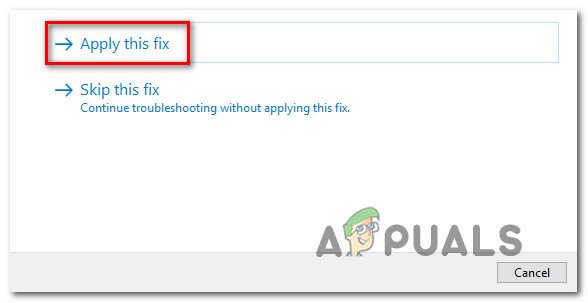
Apply the recommended fix - A lot of manual chores must be finished to practice some of the offered solutions.
- Restart your computer after installing the patch, and then try installing the update again if it previously failed.
Continue to the next procedure below if you are still unable to install updates KB5017321 or KB501738 on your Windows 11 computer.
2. Start all required WU service dependencies
One further potential explanation for this problem is that your machine may be configured such that some Windows Update service needs are disabled.
This is typically the result of a tool intended to use system resources as efficiently as possible. In this case, the incorrect behavior could be corrected by manually modifying the actions of the involved service dependencies.
To maximize the effectiveness of your system, some of these service requirements may have been modified to stay disabled. This could be the case if you are currently using resource management solutions that actively start and stop system services.
To ensure that Windows Update has all it needs to finish the upgrading process effectively, you must set the following services to AUTO mode:
- BITS (Background Intelligent Transfer Service)
- The CryptSvc (Cryptographic Services)
- TrustedInstaller
Note: By utilizing an elevated Command Prompt to verify that the commencement type of each of these services is set to Auto, you may effectively ensure that all WU service requirements are satisfied. Doing this may ensure that all WU service requirements are fulfilled.
To change the behavior of these services to AUTO and ensure that Windows Update may use the service dependencies as necessary, follow the procedures below:
- Press the Windows key + R simultaneously to open the Run dialog box.
- Next, type “cmd” into the run prompt that just appeared, and then press the Ctrl + Shift + Enter keys simultaneously to open an elevated Command Prompt window.
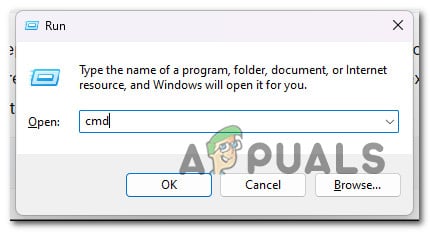
Open a CMD window - When the User Account Control asks you whether you want to provide administrative access, select Yes.
- To alter the beginning type of each important dependency, type or paste the following instructions into the elevated CMD prompt, then hit Enter after each one:
SC config wuauserv start=auto SC config bits start=auto SC config cryptsvc start=auto SC config trustedinstaller start=auto
- After each command has been successfully completed without a glitch, restart your computer as usual. You should attempt to install the unsuccessful update when the subsequent startup has finished.
If the same problem is still occurring even after ensuring every Windows Update service dependency is enabled, move down to the next method below.
3. Use the Windows 11 Installation Assistant
As it turns out, if the first methods featured in this article didn’t allow you to install the pending Windows Updates and you’re still experiencing the 0x800f0806 error every time you attempt to install this update, one quick workaround confirmed by a lot of users is to use the Windows 11 Installation assistant to install the pending update.
Note: Going this route means that you will essentially bypass the local component that’s being used to update your Windows version. However, the downside of using this method is that you won’t actually pinpoint the issue’s source but bypass it.
If you have no issues using the Windows 11 Installation Assistant to install the failing Windows 11 updates, follow the steps below:
- Launch your default browser and go to the Windows 11 official download page.
- Once on the proper page, scroll down to the Download Windows 11 Disk Image (ISO) section and click the Select Download button to choose Windows 11 from the available options.
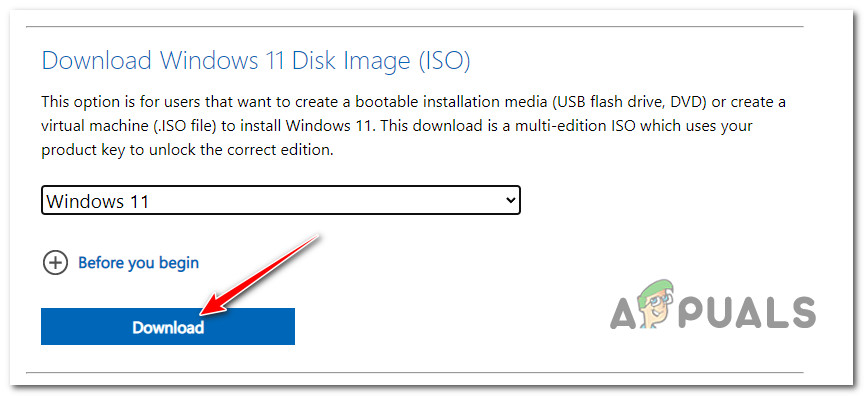
Downloading the Windows 11 ISO - After that, click the Download option and hold off on registering your choice.
- Before clicking Confirm, utilize the drop-down box to choose your desired language from the newly displayed question.
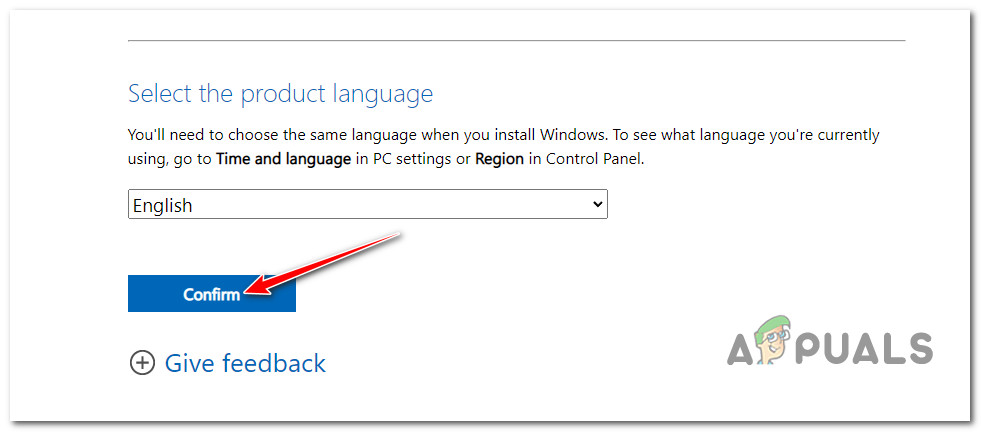
Download the Windows 11 ISO - To finalize the download, click the brand-new Windows 11 English ISO Button that just appeared.
Note: Remember that this link will only be accessible for 24 hours when you click the download button. - When the ISO has finished downloading locally, double-click the.iso file to mount it locally.
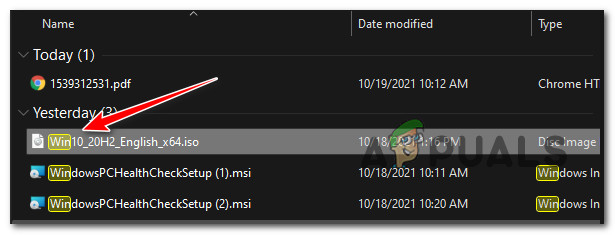
Access the Windows 11 ISO Note: Because every modern version of Windows comes with native support for mounting ISO files, there is no need to utilize any 3rd party programs like Daemon Tools to mount this ISO.
- After the ISO has been mounted locally, launch File Explorer and double-click the newly created virtual disk.
- Double-click setup.exe after you’ve reached the root directory of the Windows 11 ISO, then select Yes when the User Account Control prompts you.

Access the Setup screen - Once you’re on the Windows 11 Setup page, choose Download upgrades, drivers, and optional features (recommended), then follow the on-screen directions to finish installing the Windows 11 update.
If you don’t want to go this route to install the pending Windows Updates, move down to the next method below.
4. Install failing updates via Microsoft Update Catalog
There is a significant chance that you can completely circumvent the error code by manually applying the update or updates that have failed to install if none of the above methods have allowed you to do so. Utilizing the Microsoft Update Catalog website is the easiest and safest way to do this.
WARNING: This method will not effectively address the root cause of the problem. The fundamental issue that stops you from getting and installing cumulative Windows updates will persist even if you successfully use this technique.
The cumulative update was deployed without any issues, according to several different accounts from affected customers who used the official Microsoft Upgrade Catalog to do the update.
How to accomplish it is as follows:
- Open the official Microsoft Update Catalog page in your web browser.
- When you are on the Microsoft Update Catalog page, use the search box in the top-right corner of the page to seek the cumulative update that is the source of the issue number.
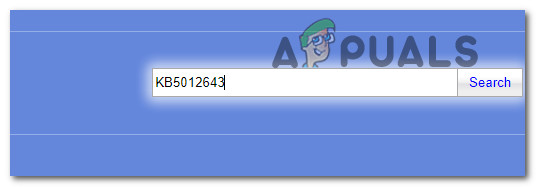
Searching for the failing update - After seeing the findings, look for a suitable update by considering the CPU architecture and the Windows version.
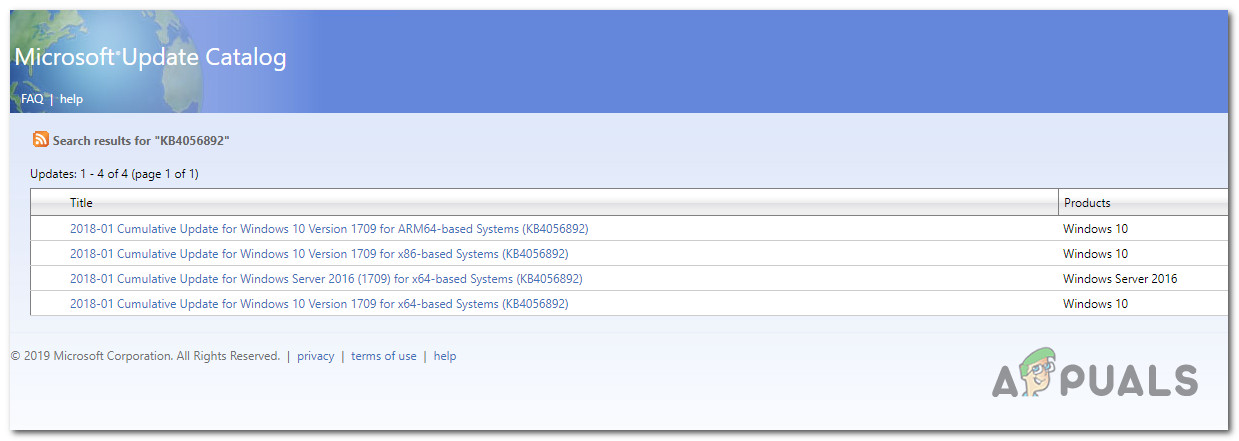
Choosing the Right Windows Update - Click the Download button after you’ve found the correct update for your system settings, then wait for it to complete before moving on.
- After that, double-click the executable file you just downloaded in your downloads folder. Then, adhere to the prompts on-screen to complete the installation within the installer.
- If the installation goes off without a hitch, you have just effectively prevented the issue from occurring.
If the problem is still not fixed this way or you’re looking for a different way of resolving the issue, move down to the next method below.
5. Reset Windows Update Components
If fixing the WU-related system files didn’t work for you, you’re probably dealing with a persistent bug impacting the Windows Update component.
Use the same repair techniques to reset every Windows Update component that could be creating problems with your pending Windows updates if the above-mentioned conventional procedures didn’t work to resolve the Windows Update 0x800f0806 error.
The majority of the time, one or more WU (Windows Update) components that are now inactive (i.e., neither open nor closed) will result in this sort of problem. If this situation applies, you can solve the issue by restarting all WU parts participating in the upgrading procedure.
To reset the whole WU component from an elevated Command Prompt, follow these steps:
- First, click Windows key + R to enter the Run dialog box. Then, to launch an elevated Command Prompt, put “cmd” into the text box and hit Ctrl + Shift + Enter.
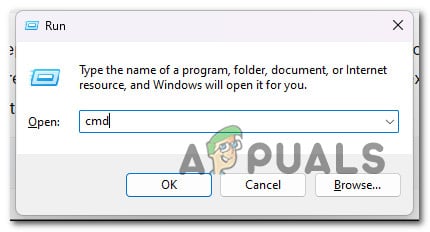
Open a CMD window Note: To give administrator privileges, select Yes when prompted by UAC (User Account Control).
- To stop all WU-related services, enter the instructions at the elevated Command Prompt in the following order, pressing Enter after each command.
net stop wuauserv net stop cryptSvc net stop bits net stop msiserver
Note: Please take note that by using these instructions, the Windows Update Service, MSI Installer, Cryptographic Service, and BITS Service will all be stopped.
- To delete and rename the SoftwareDistribution and Catroot2 directories, use the following commands once all pertinent services have been stopped:
ren C:\Windows\SoftwareDistribution SoftwareDistribution.old ren C:\Windows\System32\catroot2 Catroot2.old
- It should be noted that these directories are in charge of storing updated files needed by the WU component. Note: If you rename these directories, your OS will be forced to generate fresh, unharmed copies that are not impacted by corruption.
- After the directories have been cleaned up, use the commands below to enable the services we had previously disabled:
net start wuauserv net start cryptSvc net start bits net start msiserver
- When your computer restarts, restart it to determine if the problem has been fixed.
After successfully refreshing every Windows Update component, scroll down to the next possible solution below if the problem is still there.
6. Enable .NET Framework 3.5
Another factor contributing to this issue is if Windows Update is prevented from using the.NET Framework 3.5, a necessary installation dependency. Activate it from the Programs and Features menu to fix it.
Some afflicted updates who had previously encountered the 0x800f0806 error when installing pending Windows Updates have reported that the problem was resolved entirely after .NET Framework 3.5 was Enabled.
The steps listed below should be followed to confirm that the Windows Features panel has the .NET Framework 3.5 enabled:
- Press the Windows key + R to bring up the Run dialog box.
- Next, enter “appwiz.cpl” into the text field to launch the Programs and Features menu.
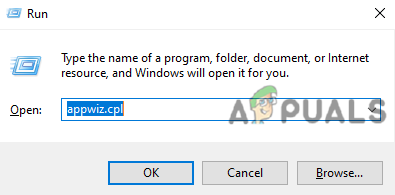
Access the Programs and Features menu - Select Turn Windows features on or off from the Programs and Features menu’s right-hand menu.
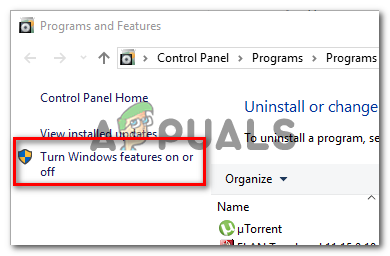
Turn Windows Features Off - Select the box next to .NET Framework 3.5 (this package includes .NET 2.0 and 3.0) on the Windows features page, then click Ok to save your changes.
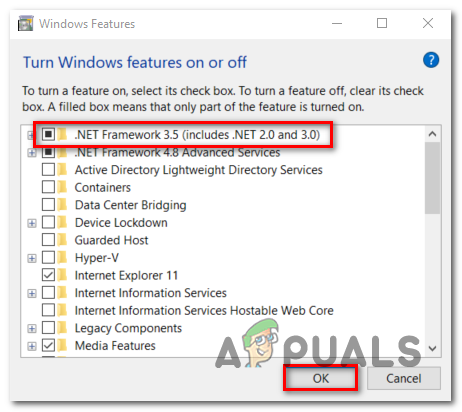
Enable the .NET framework Note: The.NET Framework 4.7 must also be installed using Windows 11.
- Click Yes to start the process at the confirmation window, then wait for the program to be correctly installed.
- When the procedure is finished, restart your computer.
After the next startup, check to see if the issue has been resolved. If the problem is still not fixed, move to the next method below.
7. Deploy DISM and SFC Scans
As it turns out, a file corruption that interferes with Windows installation’s auto-updating feature is one of the most frequent causes of the 0x800f0806 problem while attempting to install a pending system update.
Start by conducting a few scans with two built-in programs, System File Checker (SFC) and Deployment Image Servicing and Management, if this situation seems like it could be applicable (DISM).
Although SFC and DISM are somewhat similar, we advise running both checks quickly after one another to increase your chances of restoring the faulty system files.
If this case applies, begin with a straightforward SFC scan.
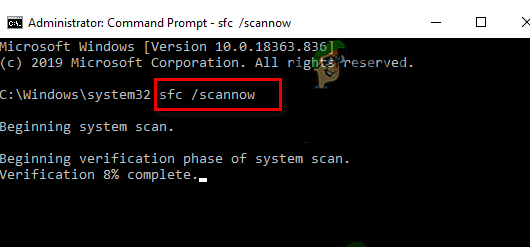
Note: Keep in mind that this tool is purely local and won’t necessitate an active internet connection.
It’s crucial to keep the CMD window open after starting this operation, even if the program appears to have frozen.
As stopping the procedure might result in logical errors on your HDD or SSD, patiently wait until it is finished.
Once the SFC scan has been finished, restart your computer to verify whether the problem has been resolved.
If the 0x800f0806 Windows Update Troubleshooter problem persists, run a DISM scan and follow the on-screen instructions to finish the process.

DISM uses a portion of Windows Update to download healthy alternatives to replace broken system files, which is a significant distinction between DISM and SFC.
Because of this, before beginning this procedure, you need to confirm that you have dependable Internet.
Restart your computer after the DISM scan successfully determines whether the 0x800f0806 error has been resolved.
Continue to the final repair below if the Windows Update Troubleshooter is still broken.
8. Perform a repair install
If none of the above procedures have helped you remedy the 0x800f0806 error, you may infer that your problem results from a system corruption problem that can’t be resolved using standard ways (with DISM and SFC scans).
The problem was resolved, according to other customers experiencing a similar problem, once they refreshed every Windows component. A clean install or an in-place repair (repair install) can do this.
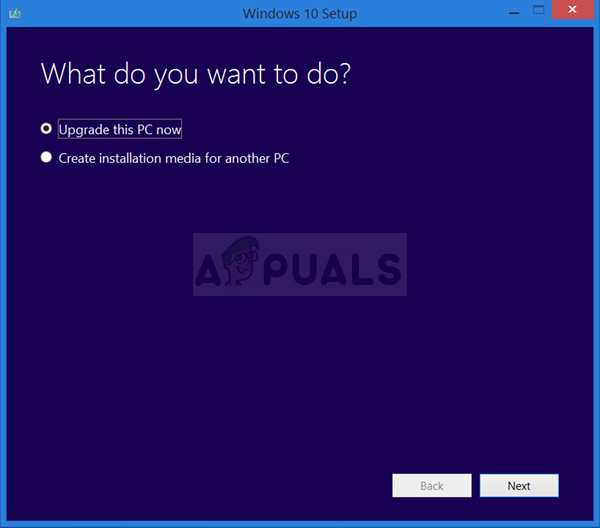
Choosing a clean install is a more straightforward option, but the primary disadvantage is that you can’t save your personal files (apps, games, personal media, etc.) unless you first back them up.
On the other hand, the benefit of choosing a repair install is that you get to preserve all of your personal data, including apps, games, personal media, and even certain user settings. The process is a bit more time-consuming, though.





